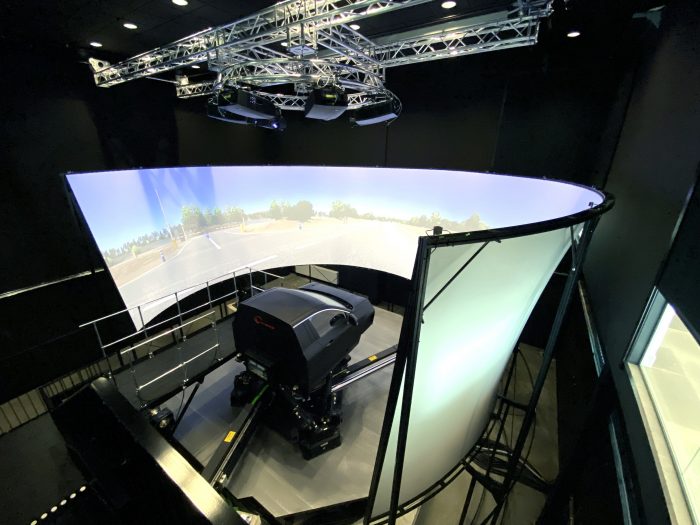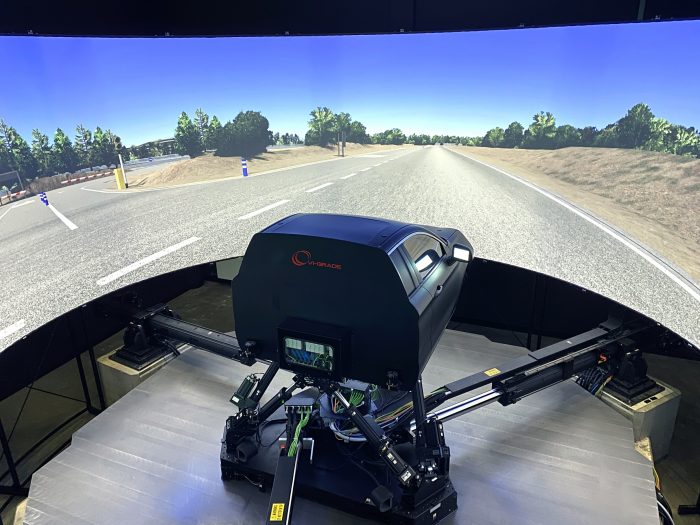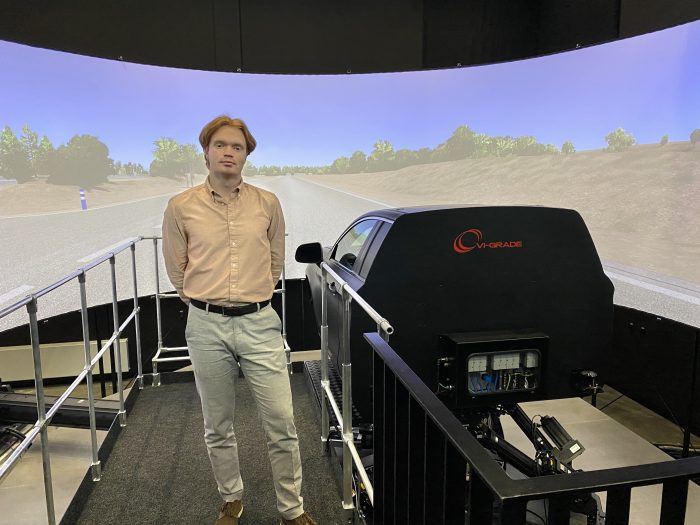The recently-installed driving simulator at CEVT’s HQ in Gothenburg aims to improve efficiency in vehicle development while guaranteeing safety.
If you’re a racing or car enthusiast and have a video game console at home, you’d most likely have a driving rig set up in your living room: a racing seat, pedals, gear lever, steering wheel and perhaps multiple monitors to give you that immersive feel. Well, guess what? The CEVT (China Euro Vehicle Technology) headquarters in Gothenburg has something similar, with one minor difference – this set up, which was completed in April 2021, costs around 4 million Euros. How’s that for being geeky?
Unlike home sets, this one is not meant for the latest Gran Turismo nor Need for Speed games but for super-realistic testing of vehicles in development. Once a car is developed up to a certain stage, a physical prototype will usually be made for testing purposes. With a state-of-the-art driving simulator, much of the preliminary testing and tuning can be done before the prototype even arrives. But what is behind a 4 million Euro piece of kit?
Firstly, the CAE (computer-aided engineering) engineers will create a virtual model of the car within the simulation software, which is then fed into the simulator computers that determines how the simulator’s cockpit will react. The cockpit responds according to the design and configuration in the software, as engineers gather feedback on how well the car performs, with regards to weight distribution, wheelbase, suspension layout etc.
As the car is driven around a virtual track, another important feedback to gain here is the feel of the vehicle. Objective response can easily be attained with a simple set of simulations, but the driver’s subjective experience is more valued here. The simulation software allows them to alter the parameters in real time until they’re fully satisfied with the vehicle’s motion.
 The driving simulator lab at CEVT, Gothenburg.
The driving simulator lab at CEVT, Gothenburg.
The virtual model of the vehicle can be readily available a year earlier than its prototype. This means, with the help of the simulator, the development team can have a better idea of how the car will perform and make the necessary adjustments early on. The simplicity in adjusting the configuration with a few clicks of a button promotes quicker development and keeps the team agile during the process.
It also proves helpful when a car is jointly developed between the team in Sweden and Geely’s engineers elsewhere – a virtual model can be easily and quickly shared online for feedback and approval, without the hassle and complication of shipping an actual prototype vehicle back and forth across the globe. Think about the good it does to the environment too!
The main limitation with simulators is the amount of given space that is allowed for movement. CEVT’s simulator model is known as the VI-grade DiM250, which means the simulated vehicle can only move in an area of roughly 2.5 metres, way less than a vehicle would in a real-life scenario. Moreover, some features are difficult or inefficient to model due to complicated physics or simply require too much computational power.
According to Albin Gröndahl, CAE Engineer and the simulator’s Project Manager, all that doesn’t necessarily matter, as he thinks CEVT is walking a good balance with this latest piece of tech. “The more detailed we try to model a behaviour, the more we’re sacrificing the quick development feedback that the machine provides,” he said.
 The cockpit has an area of motion of up to 2.5 metres.
The cockpit has an area of motion of up to 2.5 metres.
 Albin Gröndahl, Senior Engineer and Project Manager for the project.
Albin Gröndahl, Senior Engineer and Project Manager for the project.
In the near future, the simulator will look into incorporating active safety features, otherwise known as Advanced Driver-Assistance Systems (ADAS). It will be able to simulate real life traffic scenarios and observe how the car responds to constantly-changing environments and obstacles. For example, one of these could be how quickly the car can brake when there is a pedestrian crossing the road.
Another area the simulator will progress into is autonomous driving. Although complicated to develop, it will be much safer to perform autonomous driving tests through a simulator since there is no real danger: various scenarios can be built and tested, and once the developers are fully satisfied with the results, actual testing can be conducted on the proving ground for final checks, thus minimizing any risk of traffic collisions or otherwise dangerous situations.
Far from being an all-encompassing solution for the development team, the simulator is yet another powerful tool in the toolbox of CEVT, a larger picture that enhances development in every direction. It saves time, saves cost and above all, it keeps CEVT at the forefront of technological development in the automotive industry.
The driving simulator in action.
To keep up to date with everything happening in Geely Group, sign up to our newsletter.


